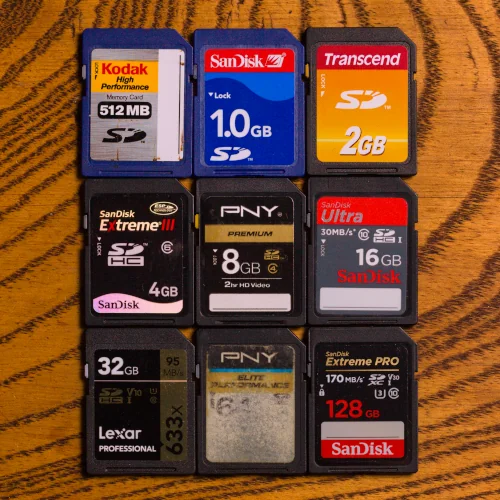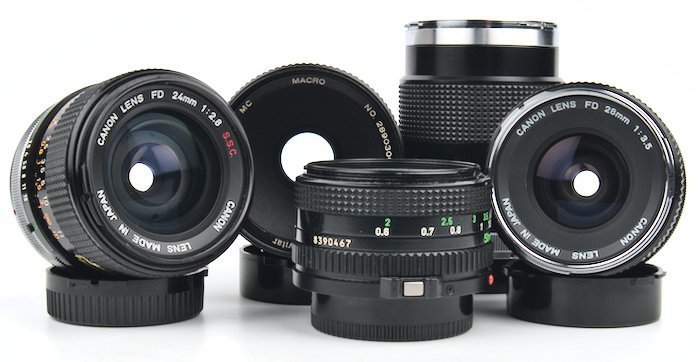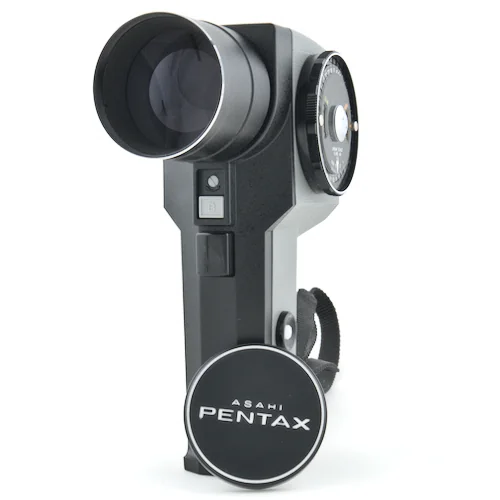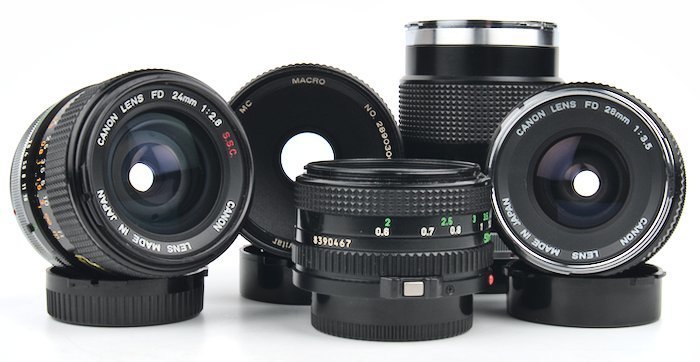
The 5 Best Budget Canon AT-1 Camera Lenses
- Nathaniel Stephan
- Canon at 1
- October 10, 2024
Table of Contents
The Canon AT-1 remains a great camera to enjoy or learn film photography with.
The FD-mount was discontinued in 1987. All of the lenses available are 30-40 years old. Lens condition is the most important consideration.
The most popular lenses were targeted at consumers that wanted small, lightweight, easy to use, and fun lenses. These are still easy to find today in good condition.
Lenses targeted towards professionals are harder to find, and often significantly more expensive.
The three main lenses to consider at the 50mm f1.8, 28mm f2.8, and 135mm f2.8.
Affiliate Advertising Disclosure
Outside the Shot is a participant in the Amazon Services LLC Associates Program, an affiliate advertising program designed to provide a means for sites to earn advertising fees by advertising and linking to Amazon.com.
As an eBay Partner, I may be compensated if you make a purchase. I also participate in affiliate advertising programs with KEH and Adorama. More can be found on the Affiliate Disclosure page.
Kit Lens and Standard Primes
Canon FD 50mm f/1.8
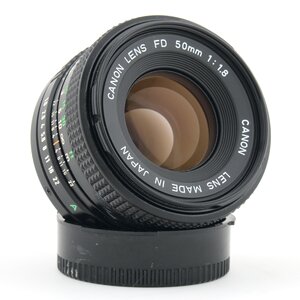
If you don’t already have it, your first lens should be the original “kit lens” for the AT-1, the Canon FD 50mm f/1.8. The 50mm f1.8 is cheap, easily found for sale online, and has superb image quality.
- The “classic” setup as it can be considered the original kit lens.
- Unbeatable value.
- Light and compact.
- Widely available and easy to find in good condition.
- Uses 55mm filter threads.
Check a variety of places to find the best condition and price.
See current price and more information on:
For a 50mm lens of photography, a 50mm camera lens is an ideal choice. The types of photography comprise travel, street, portraits, landscapes, architecture, and casual everyday use. This is the most popular focal length that is paired with the AT-1.
It is a light, small, and well balanced lens. The lenses weigh anywhere from 170-305g, with older versions being heavier. The new FD version, which was the last to be developed, is the lightest.
Canon also created two faster 50mm lenses for the FD mount.
Canon FD 50mm f/1.4
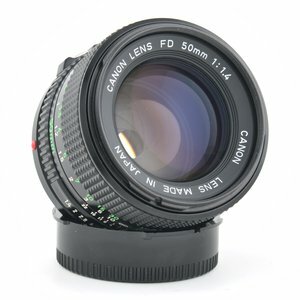
The Canon FD 50mm f/1.4 is 2/3 of a stop faster, but that comes at the cost of additional weight. It is only slightly more expensive when compared to the f1.8.
- Excellent image quality.
- Optical multi-coatings.
- Fairly easy to find in good condition.
- Larger and heavier than the f/1.8.
You can find four different versions of the 50mm f/1.4. The “new FD” copy is the newest and lightest of the bunch.
See current price and more information on:
This lens is large, heavy, and hard to focus lens. Do not expect sharp images when shot wide open. If you stop the lens down to f/1.8 or f/1.4 you will not see a notable difference between it and the other lenses.
There are 2 versions, both are costly. The cost of the lens is because of collectibility and rarity, not optical superiority.
Alternative Standard Lenses
If you like other focal lengths, here are several other possible choices. Count upon having to spend a greater amount than you normally would for a 50mm lens of comparable speed.
- Canon FD 35mm f/2 SSC
- Canon FD 35mm f/2.8
- Canon FD 35mm f/3.5
- Canon FD 55mm f/1.2
Wide Angle Lens
Canon FD 28mm f/3.5
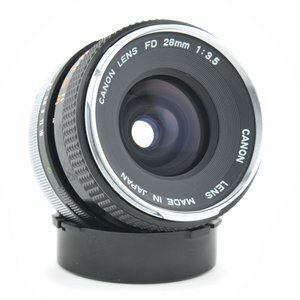
A 28mm focal length lens is often used for street photography. However, lenses that are wider than 28mm are the most popular for architectural and landscape photography.
- Great combination with a 50mm lens.
- Optical multi-coatings.
- Inexpensive and widely available.
- Small and light.
See current price and more information on:
My recommended choice is the Canon FD 28mm f/2.8 owing to the cheaper price, wide availability, and excellent optics.
Alternative Wide Angle Lenses
In terms of cost, the relationship is simple. The wider the field of view, the less affordable the lens will likely be. Faster versions also sell for appreciably more.
Weight will change based on the qualities of the lens. You will see lenses from 170g to 500g. Faster apertures will also mean that those lenses will physically be large and cause the camera to be more difficult to handle.
- Canon FD 7.5mm f/5.6 Fisheye
- Canon FD 14mm f/2.8L
- Canon FD 15mm f/2.8
- Canon FD 17mm f/4
- Canon FD 20mm f/2.8
- Canon FD 24mm f/1.4
- Canon FD 24mm f/2
- Canon FD 24mm f/2.8
- Canon FD 28mm f/2
- Canon FD 28mm f/2.8
Portrait & Telephoto Lens
Canon FD 100mm f/2.8
The 85mm lens wasn’t as widely used when the AT-1 was first introduced to the market. Rather, the 135mm focal length was the go to lens for portraits.
- Excellent portrait lens.
- Less expensive 85mm alternative.
- Great value.
- Inexpensive.
See current price and more information on:
If you want to take portrait photos with the AT-1, there are a variety of short telephoto lenses to choose among. The 100mm f/2.8 lens is one of the most economical selections obtainable.
An 85mm lens will cost the most, with 135mm lenses sitting in the middle of the price bracket.
As all of the Canon FD telephoto lenses will be manual focus, they are more compact than EF versions. Clearly, something like the Canon FD 85mm f/1.2L will be big and hefty with the quantity of glass in the lens.
Count upon low prices for the Canon FD 100mm f/2.8. There is also a 100mm f/4 macro version of the lens. It will certainly will cost more and is not the best choice for portraits as it needs to be stopped down.
Alternative Telephoto Lenses
Another alternative, the Canon FD 135mm f/2.8 is among the cheapest prime lenses you can purchase. You will have to look through loads of results for third-party 135mm lenses that aren’t anywhere near as good as a Canon lens.
There are 85mm lenses to choose from. The priciest is the Canon FD f/1.2L lens. A more inexpensive option is the Canon FD 85mm f/1.8 lens, but it remains significantly less affordable when compared to the various telephoto lenses previously mentioned.
- Canon FD 85mm f/1.2L
- Canon FD 85mm f/1.8
- Canon FD 100mm f/2
- Canon FD 135mm f/2.5
- Canon FD 200mm f/2.8
- Canon FD 200mm f/4
AT-1 Zoom Lenses
Canon FD 35-105mm f/3.5 & Vivitar Series 1 70-210mm f/3.5
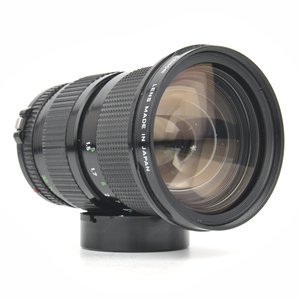
The benefits of pairing a AT-1 along with a zoom lens is tempting. Having the capability of using a range of focal lengths without the need to change a lens is advantageous.
Keep in mind that all these are vintage zoom lenses. It is nearly impossible to find copies without the following problems:
- Haze and or Fungus
- Large amount of dust in the lens
- Loose or tight zoom ring
- Loose or tight focus ring
- Oil on the aperture blades
- Decentered lens elements
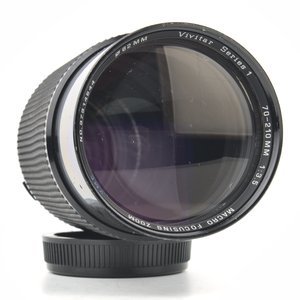
Additionally, you need to keep in mind the drawbacks the lenses have even when in excellent condition.
- Image quality will not be good when shot wide open.
- One or both ends of the focal range may suffer from a large amount of distortion.
- Zoom lenses are larger and generally heavier than primes.
Alternative Zoom Lenses
When it comes to costs, the majority of older zoom camera lenses are low priced.
- Canon FD 70-210mm f/4
- Canon FD 80-200mm f/4L
- Canon FD 28-85mm f/4
Macro Lens
Vivitar 90mm f/2.8 & Vivitar 55mm f/2.8
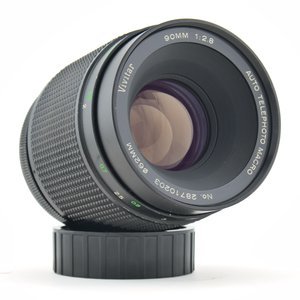
- My favorite vintage macro lens.
- Available in multiple lens mounts.
- Incredible value.
- Sharp corner-to-corner at f/8.
See current price and more information on:
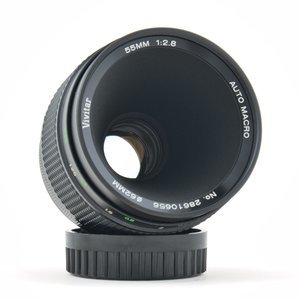
- My second favorite vintage macro lens.
- An excellent choice for close-up photography.
- It does not need an extension tube to reach 1:1 magnification.
See current price and more information on:
The 2 suggested macro camera lenses were manufactured by Komine in Japan. The lens was also released under different brand names. Spiratone, Rokunar, Elicar, Quantaray, and Panagor are names you might find on a copy of the lens.
There is a Vivitar 90mm f/2.8 Macro Lens Review and a Vivitar 55mm f/2.8 Macro Lens Review.
For shooting at macro magnification (1:1), the 90mm lens will probably be the better choice because it has a larger working distance.
The 55mm focal length lens is really good for table-top and close-up photography.
Alternative Macro Lenses
- Canon FD 50mm f/3.5
- Canon FD 100mm f/4
- Canon FD 200mm f/4
Used FD Camera Lens Prices
Prices are constantly changing. During the past several years, the desireability of film photography has been rising. Consequently, price ranges have slowly climbed.
The best option is to check out pricing from several websites. Promptly get a incredible deal in the event that you find one due to the fact that it can be a very long time until more comes up.
What Lens Mount Does the Canon AT-1 Use?
The AT-1 utilises the Canon FD lens mount. Canon used the FD mount for film cameras built from 1971 through 1992.
Here is a list of all the cameras that have a Canon FD mount.
The FD mount replaced the Canon FL mount, which was used between 1964 and 1971. FL mount lenses can be used on the AT-1, but you will have to use stopped down metering.
Standard Lens Cap Size
The standard lens cap and filter ring thread diameter for Canon FD lenses is 55mm.
Utilising a standardized filter thread size is nice since you just need to spend money on and carry one set of filters.
Several zoom and telephoto lenses have larger filter ring thread diameters as they have sizeable front lens elements.
FD vs FL Lens Mount
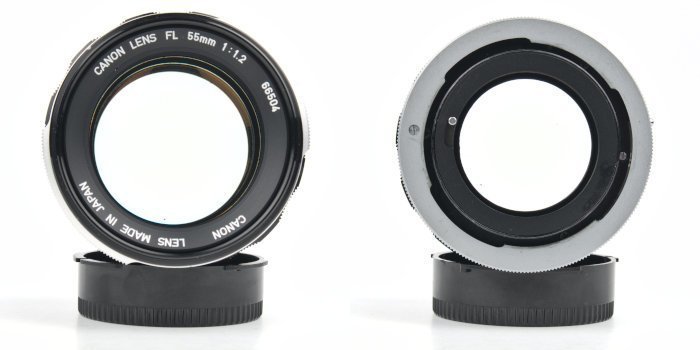
The Canon FL mount was made prior to the FD lens mount. You can make use of FL mount lenses on the FD mount, and FD lenses can be used on the FL lens mount.
What Canon FL lenses do not have the technology to automatically do stop-down metering. What this means is the lens are required to be stopped down by pressing the depth-of-preview switch to enable the AT-1’s light meter to display a correct value.
FD vs new FD Lenses
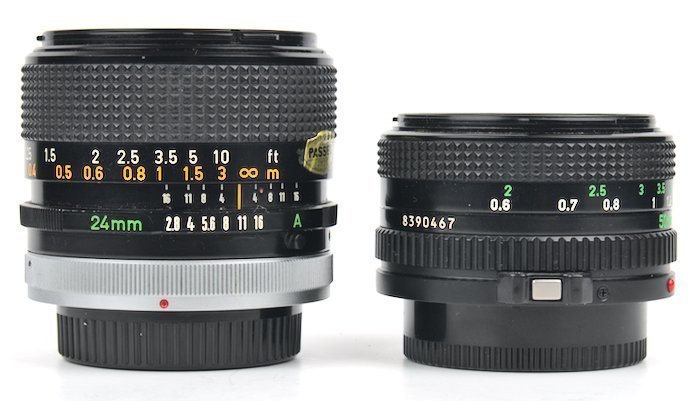
The entire new FD lens rotates to lock onto the AT-1. As opposed to original FD lenses which have a breech-lock ring at the back of the lens that has to be tightened to be able to mount a lens.
FD and new FD lenses are interchangeable with one another. There will be no compatibility issues.
Often you will find new FD lenses referred to as FDn lenses.
The change in the design of the breech-lock ring was as a result of complaints. A minority of users had lenses getting jammed on a camera mount.
If you are unfamiliar with putting on an FD mount lens to a camera body, don’t be anxious. Just simply take the process slow and do not force anything.
Telling FD and FDn Lenses Apart
You can quickly tell new FD and FD lenses from one another. New FD lenses have a silver button on the outside of the lens, near the mount.
The older FD lenses have a ring that is required to be rotated in order to lock the lens to the camera mount.
